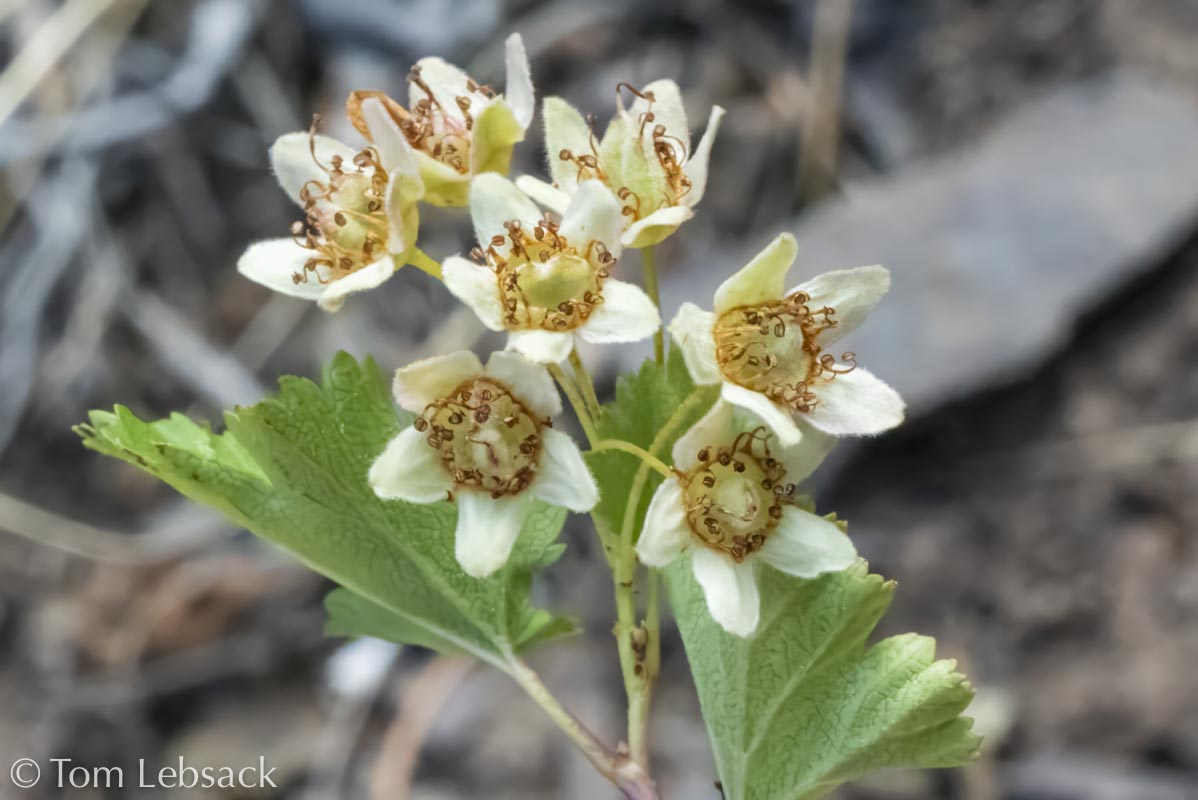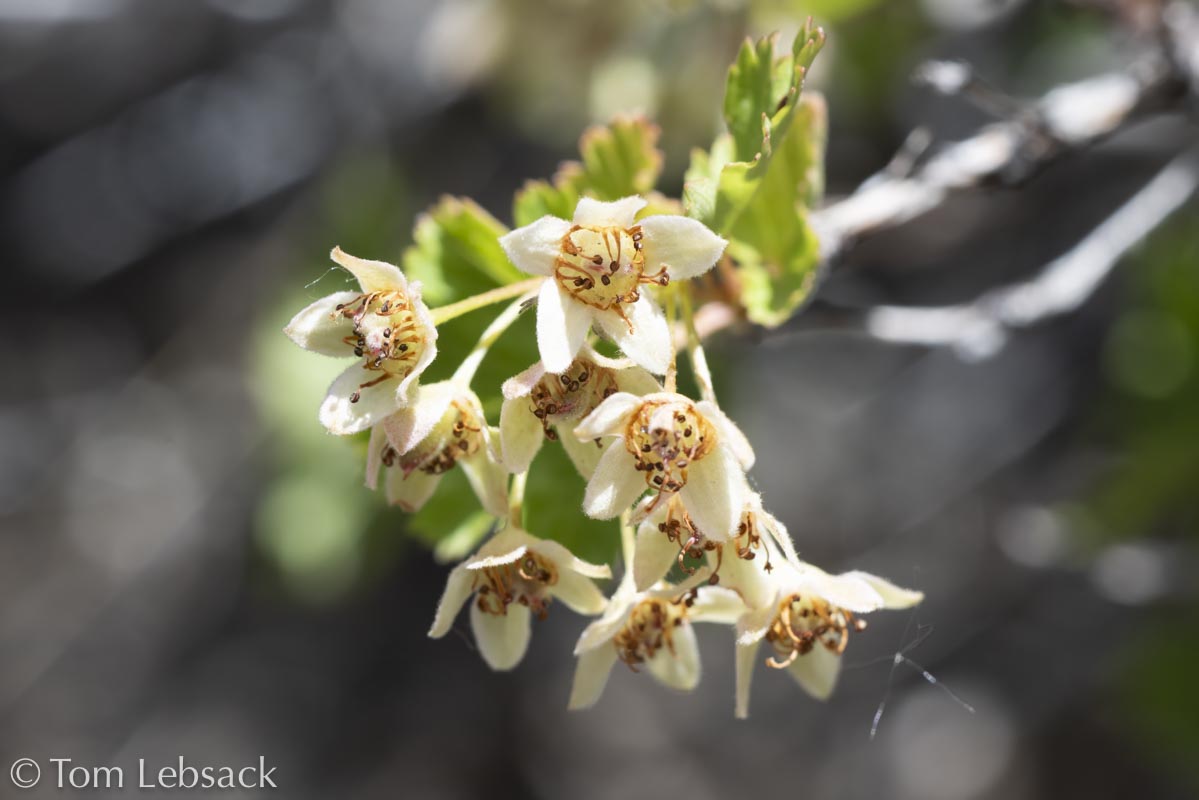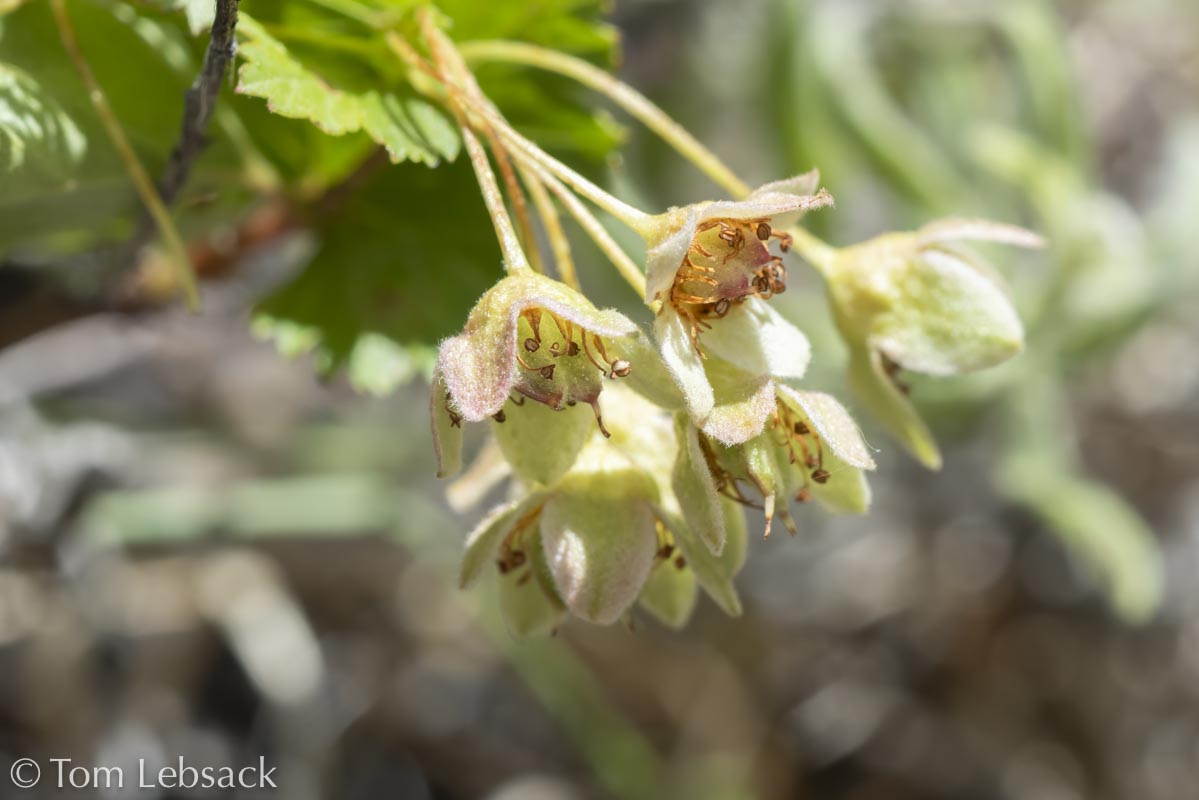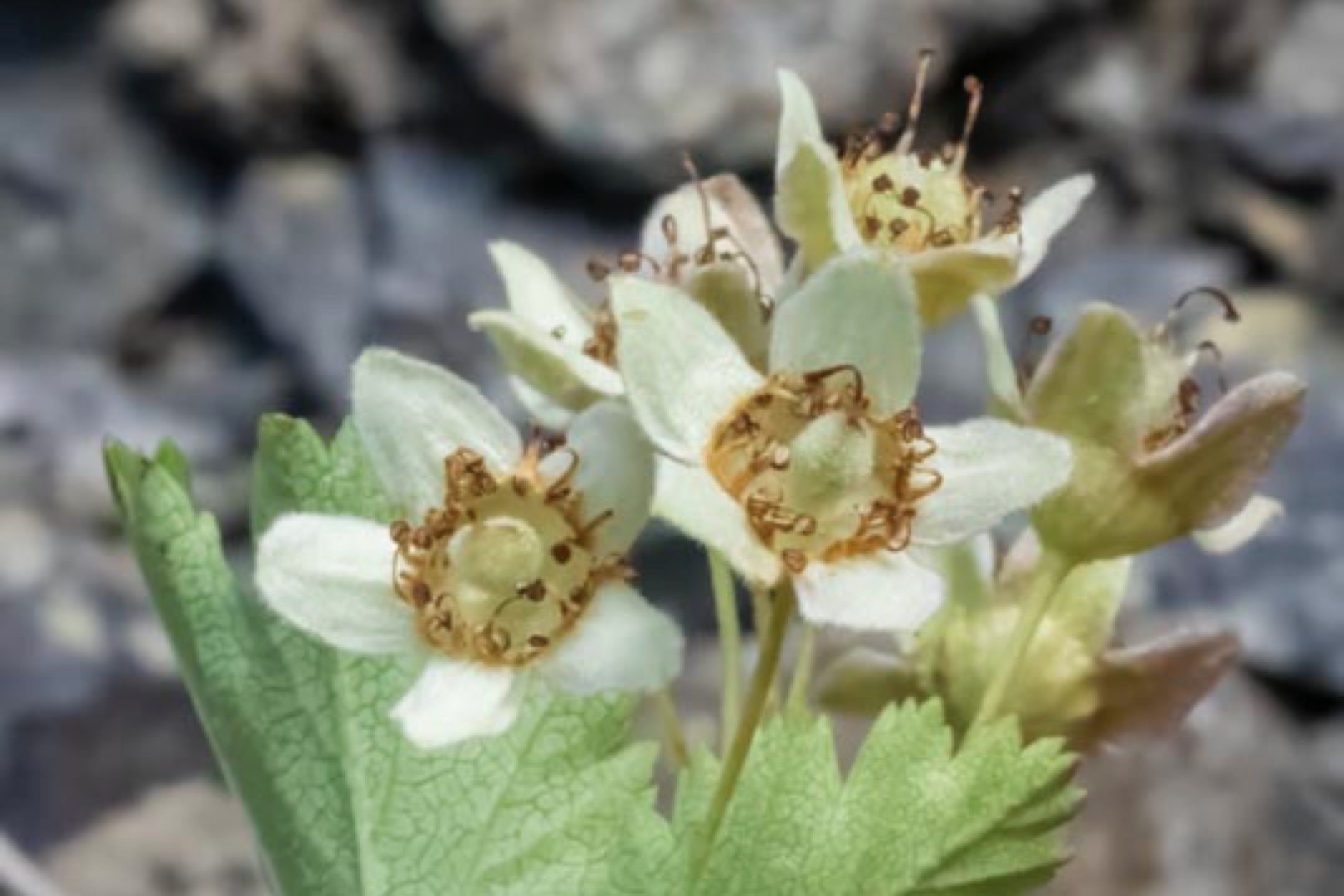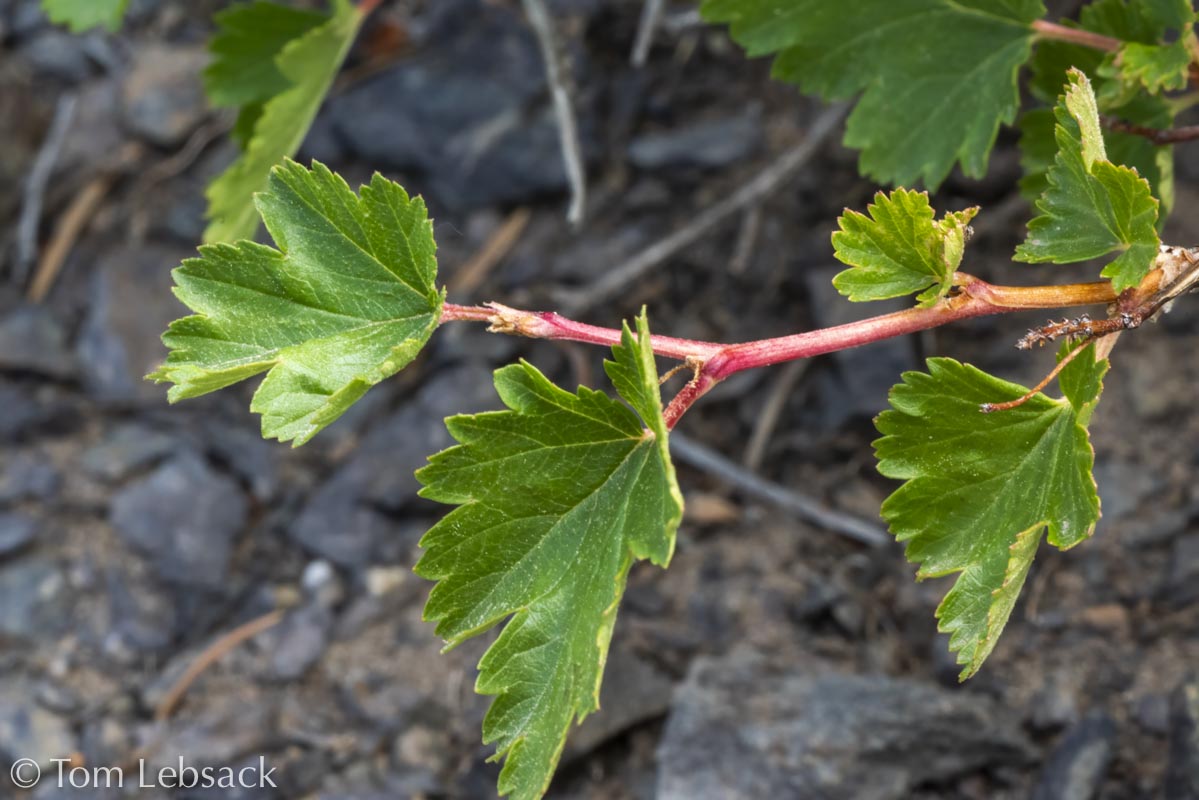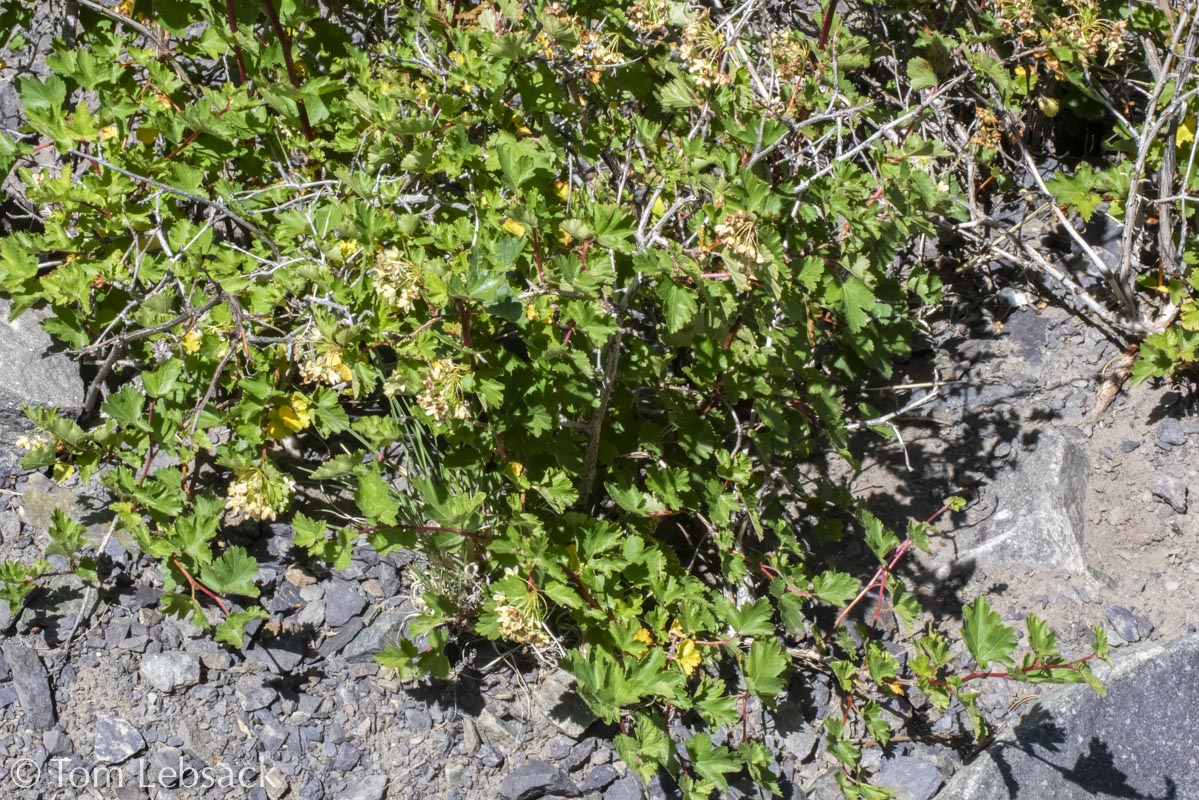(Mountain Ninebark)
| Scientific Name | Physocarpus monogynus | USDA PLANTS Symbol | PHMO4 |
| Common Name | Mountain Ninebark | ITIS Taxonomic Serial No. | 25281 |
| Family | Rosaceae (Rose) | SEINet Reference |
Click Here |
| Description |
Life zones and habitat: Plains to subalpine (4800 to 10500 ft); rocky, calcareous (limey) soils along streams, dry hillsides, canyons and in conifer woodlands. Plant: Small unarmed shrubs up to 3 ft. tall; stems much-branched with exfoliating bark; newer twigs are smooth to somewhat hairy, greenish, becoming red and then dark gray. Leaves: Ovate to nearly round in outline, 5/8 to 2-1/4 inches long and about as wide, palmately-lobed with 3 to 5 lobes; margins are double-crenate; surfaces are dark green on top and lighter beneath; on petioles 1/4 to 7/8-inch long. Inflorescence: Roundish clusters of 10 to 25 small white flowers at stem tips; each flower less than 3/8-inch across with 5 broad, fuzzy petals; multiple protruding stamens; 1 to 3 hairy styles (carpels); sepals are triangular to ovate, 1/8-inch long and hairy; pedicels are 1/3 to almost 3/4-inch long. Bloom Period: May to July. References: "Flora of Colorado" by Jennifer Ackerfield, Flora of North America, Montana Field Guide and SEINet. |
BONAP Distribution Map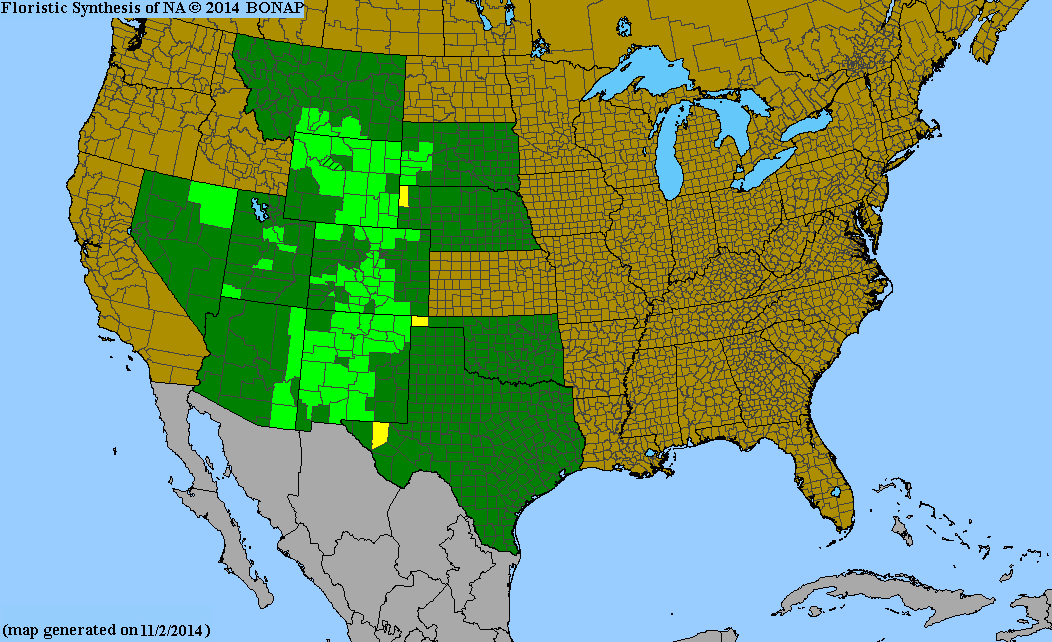 Map Color Key |
Colorado Status: Native |
© Tom Lebsack 2025
Banner photo: Castilleja rhexifolia and a brewing storm over the San Juan Mountains
I try to provide accurate, up-to-date, and relevant information, but cannot guarantee the completeness or accuracy of any information presented on this website. I use authoritative references to insure high standards of accuracy and review and update the information frequently.
